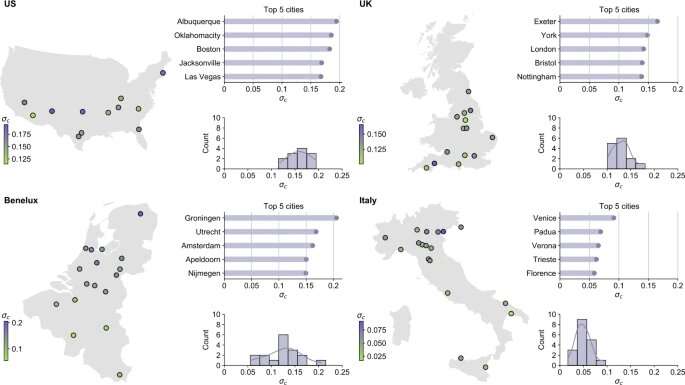This article has been reviewed according to Science X's editorial process and policies. Editors have highlighted the following attributes while ensuring the content's credibility:
fact-checked
peer-reviewed publication
trusted source
proofread
Investigating gender equality in urban cycling

Over recent years not only has cycling proved itself to be an outdoor activity with tremendous health benefits, but it has also presented itself as a useful tool in the quest to find an environmentally friendly method of urban transportation.
Despite the increasing popularity of cycling, many countries still have a negligible uptake in the pursuit and this is even more pronounced when considering how many women engage in cycling. To this day, a mostly unexplained gender gap exists in cycling.
A new paper in EPJ Data Science by the University of Turin Department of Computer Science researcher Alice Battiston and her co-authors attempts to understand the determinants behind the gender gap in cycling on a large scale.
"We studied the strength of association between cycling uptake by women compared to men and several characteristics of western cities, both at a macro and microscopic level," Battison said. "At a macroscopic level, we showed that the cycling uptake of women is typically larger in flatter cities with a safer urban environment, such as cities with large low-speed limit zones and fewer 'blind'-intersections or three-way crossings."
Battison and the team found the macroscopic result had a direct counterpart on a smaller scale. She explained that delving deeper into street-level features, the data showed that New York City streets with protected cycling infrastructure are up to four times more likely to have a large influx of women than streets with no cycleway.
"This result is not limited to the city of New York but can be generalized to the vast majority of the cities in our sample," she continued.
To reach their conclusions, the researchers used data from over 60 cities in the West from the US to Europe from several sources. Information on cycling behavior for the study was extracted from the heatmaps of activity provided by the sport-tracking application Strava, which as of 2018 had around 36 million users.
"The most surprising thing I found during my research was not really coming from the research activity itself, but from the reaction of people around me when I would talk about the study," Battison said. "I received the entire spectrum of reactions. Most people would agree on the importance of improving the quality of the cycling-dedicated infrastructure to ensure even the most vulnerable or risk-averse demographic group could start cycling."
She added that a few people were scared by the impact that changes to the urban environment would have on their daily life.
"While purely anecdotal, it reminded me once more that human beings are reluctant to change, and therefore co-creation processes actively engaging local communities are crucial to ensure urban interventions are really effective," Battison concluded. "Future studies in experimental settings could shed light on causal relationships and the impact of specific urban interventions."
More information: Alice Battiston et al, Revealing the determinants of gender inequality in urban cycling with large-scale data, EPJ Data Science (2023). DOI: 10.1140/epjds/s13688-023-00385-7
Journal information: European Physical Journal Data Science
Provided by Springer




















